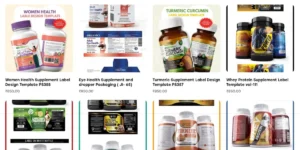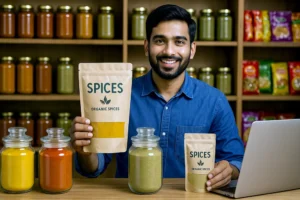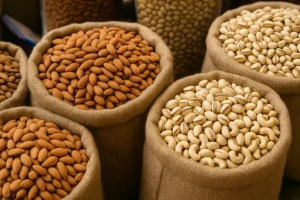Starting a spice and herb manufacturing business can be highly profitable if you focus on delivering fresh, aromatic products. The right packaging not only extends shelf life but also enhances brand appeal. This guide covers how to set up a spice business while choosing packaging that preserves the essential qualities of your products.
Why Proper Packaging is Crucial for Spices and Herbs
🌿 Aroma Retention: Airtight packaging locks in natural oils and fragrances.
📦 Freshness: Protects against moisture, light, and air exposure.
🏷️ Brand Identity: Custom packaging stands out on shelves and attracts customers.
Step 1 Set Up Your Spice and Herb Manufacturing Business
Identify Your Niche
📌 Whole Spices: Cumin, coriander, and peppercorns.
📌 Ground Spices: Turmeric, chili powder, and masala blends.
📌 Herbal Mixes: Dried herbs and spice fusions for culinary use.
Source Quality Raw Materials
- Partner with trusted farmers and suppliers for authentic flavors.
- Ensure ethical and sustainable sourcing practices.
Meet Regulatory Standards
- Obtain required food safety certifications (e.g., FSSAI, ISO).
- Follow packaging and labeling regulations.
Step 2 Choose the Best Packaging Materials for Spices
The right packaging preserves aroma and prevents contamination.
Ideal Packaging Options
- Stand-Up Pouches: Resealable and moisture-resistant for powdered spices.
- Glass Jars: Airtight and reusable for premium spice blends.
- Metal Tins: Lightproof and durable for specialty herbs.
- Foil-Lined Bags: Protect from air and humidity for bulk packaging.
Step 3 Design Functional and Attractive Spice Packaging
Must-Have Packaging Features
🔒 Airtight Seals: Preserve freshness and prevent leaks.
🔒 UV Protection: Shield spices from light exposure.
🔒 Resealable Closures: Allow easy access while maintaining quality.
Step 4 Ensure Clear and Compliant Labels
Accurate labels are essential for legal compliance and customer trust.
Key Label Information
- Product Name: Clearly specify the spice or blend.
- Ingredients: List all components in the spice mix.
- Net Weight: Display accurate measurements.
- Storage Instructions: Guide customers on preserving freshness.
- Batch Number & Expiry Date: Ensure traceability and quality control.
Step 5 Market and Distribute Your Spice Brand
📣 E-commerce: Sell via your website or online marketplaces.
📣 Retail Outlets: Partner with grocery stores and specialty shops.
📣 Brand Storytelling: Share the origin and craftsmanship behind your spices.
Final Thoughts
Launching a spice and herb business requires careful planning, high-quality raw materials, and effective packaging. By choosing the right materials and ensuring compliance, you can deliver fresh, aromatic products that build customer loyalty.
Need custom spice packaging? Explore our packaging design templates at PackagingSeller.com, tailored for spice and herb businesses.
Can You Create a Marketing Strategy That Delivers Results on a Limited Budget?











2 Responses